
22 minute read
Technical Theme
presence in neighbouring countries, investing in developing its Pufina brand across the borders.
As one of the largest providers of private label products for home consumption in Romania, the business is continuously working “with most of the large retail chains present in Romania”, producing toilet paper and kitchen towel products.
It doesn’t directly work in the AfH “for now,” he adds. “Only through our retail partners, so Covid-19 has had little impact for us here in this sector. However, in the tissue private label market we are seeing a lot of growth year by year, but still not with such a rapid rhythm as we expected years ago. We have noticed an increase in quality for some of the private label products and a higher variety of products offers in this sector. Romanian consumers are definitely looking to buy good quality products which they know and trust, such as branded products.”
However, he believes private label products will continue to grow in popularity in the Romanian market, and in response to that the company will continue to diversify its product portfolio: “There is still a place for trusted, good quality brands and private label products in the Romanian market if the products offer a good ratio of price and quality.”
The Romanian market is “clearly growing in both volume and value”, and while the tissue market doesn’t generally undergo too many transformations as it is “a common good,” as prices have risen the quality of the products that customers are looking for has also increased: “About 90% of the market is made up of toilet paper and kitchen towels and we see that the napkin and handkerchiefs segments have fallen in the pandemic. We expect the market to continue to grow from now on, because there is still a big difference in consumption between Romania and other countries. Referring to consumption per capita and Romania is almost half compared to countries such as Germany or France.”
For the immediate future the business will continue to focus on its key strategies. “We are the largest producer of paper products for household and industrial use in Romania and also the largest producer of industrial paper rolls in Southeast Europe. Our focus will remain here, as well as the continuous adoption of sustainability as one of our core values, and not just as a global trend.”
He adds that the business has taken on a complex set of environmental,
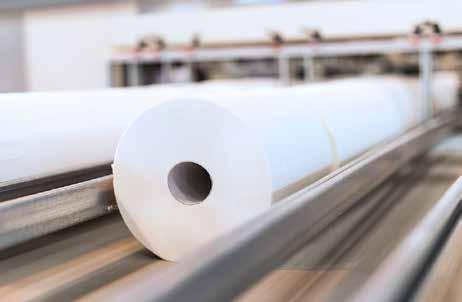

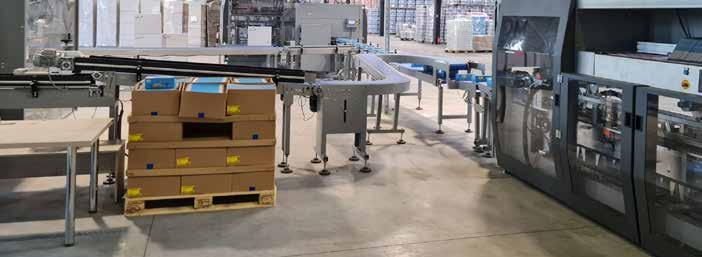
The production line in Sebeș: new ways are being road-tested
social, and governance (ESG) goals that have become part of the company's development strategy: “Environmental protection is manifested by the sustainable development of activities and processes and a responsible procurement policy. We care for natural resources and focus on the most efficient use of resources, even renewable ones.”
New ways will also be road-tested: packaging made of a combination of paper and bioplastic, or replacing the adhesive with water in the process of gluing paper are two examples Stanciu mentions. “In addition to the classic ways, we are also using them on the new production line in Sebeș. Achieving a balance between increasing productivity and lowering our carbon footprint is another measure in line with our care for the environment. Pehart produces tissue paper and finished paper products only from a fibrous mixture of cellulose from softwoods, hardwoods and eucalyptus without any addition of recycled material or mechanical fibres. The packaging is made of low-density
The Pufina brand: the second brand of household paper in Romania
polyethylene, recyclable plastic, and the support tube is made of recyclable and biodegradable cardboard. The new products from the Pufina Natura range further prove our concern for the environment, through their compostable and biodegradable packaging.”
To reduce CO2 emissions, Pehart Group has also carried out a pre-feasibility study for the installation of a photovoltaic park and the production of green hydrogen by electrolysis. “We want to create facilities for storing the green hydrogen produced to be used as fuel in a cogeneration plant mixed with natural gas,” he adds.
The challenges of operating through the pandemic have also resulted in some positives for the business. “We had to rethink the way the work is carried out so that we can be sure that a coherent flow of production can be maintained, while ensuring distance and compliance with other safety rules,” he says. “The
Covid-19 pandemic presented us with various challenges at the company level and, at least at the beginning, we had to find solutions to several types of problems. “Employee safety was our number one priority. Specialists in the paper industry are hard to find and we generally train them, so the health of our staff is a very valuable resource.” Another challenge in the first months after the pandemic began were the
“extremely high market demand”, which he says was “an artificial necessity, caused more by panic”. “What it taught us was that it was necessary to reorganise production and logistics to cover the high consumption of that period. Our factories in Sebeș and Dej have worked at full capacity to meet market requirements.”
And for the future growth of tissue in the region? “During these turbulent times in our region it is difficult to make accurate predictions. However, we are selling high necessity products, so we do predict an increase in volume for both toilet paper and mostly for the kitchen towels in the region. We have also seen an increase, especially on the towel market, which developed during the last few years and an increase of higher quality toilet paper (the market moved from 1,2 layers toilet paper towards higher quality 3 and even 4 layers paper).”
“And we remain focussed on our strategy. We aim at covering large parts of the paper market in Romania and the region and we will continue to constantly invest in sustainable technologies that generate premium quality products. Our paper machines never stop, so production works non-stop.
“We are close to full capacity, but we estimate that we will reach the maximum by the end of this year. We've been investing heavily in paper processing capabilities lately and it is paying off. Currently, we estimate that about 40% of all paper sold on the shelf in Romania is produced by Pehart Group - we won’t stop there.”
EFFECTIVE DUST CONTROL USING STRENGTH RESINS AND RELIABLE DUST MEASUREMENTS
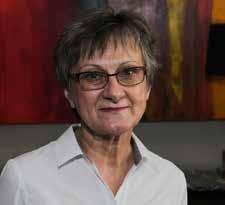
Lucyna Pawlowska
Principal Specialist, Applications & Marketing, Pulp & Paper, Americas

Vladimir Grigoriev
Director, Applications & Marketing, Pulp & Paper, Americas
Abstract
Dust and lint in tissue negatively impact operational safety, machine productivity and tissue quality. One approach to reducing tissue dust is the use of dry strength resins (DSR) combined with lower refining. To support the dust control program implementation, Kemira has developed a unique and reliable test method utilising an image-based instrument, KemView Dust Analyser. A combination of an effective DSR and an ability to quantify dust are two critical factors for a successful dust control program. In this article, we review our dust control programmes and demonstrate their effectiveness with industrial case studies.
Introduction
A high amount of dust is generated in production of tissue paper, especially premium bath and facial tissue made with eucalyptus fibres or tissue produced with recycled fibres.
Both eucalyptus fibres and recycled fibres are relatively short and poorly bound to the sheet surface. The largest amount of dust is formed during the creping process, especially if creping is performed at a low sheet moisture (2%-4%) in order to increase tissue softness. Dust is also formed during slitting, rewinding, converting and embossing.
The mitigation of dust formation is a significant challenge for tissue producers. High levels of dust negatively affect safety and productivity in tissue mills and converting plants. Dust creates hazardous conditions that can lead to fires and explosions, and workers who are exposed to tissue dust can become allergic to it. Excessive dusting can reduce machine productivity due to frequent clean-ups, unexpected shutdowns and equipment or instrumentation failure. Finally, consumer’s dissatisfaction about a tissue product can arise if tissue leaves lint residue on consumer’s skin or dust accumulates around tissue dispensers.
Tissue makers use various tools to mitigate dust. Most commonly, mills use dust collection systems for dust removal from air and from the tissue machines and converting equipment surfaces. Dust removal systems ensure a safe environment in the mill and converting facility. However, mechanical removal does not reduce the dust present in the final tissue product.
There are chemical solutions that can be utilised to minimise dust in tissue and also to reduce dust formation during creping and converting process. One of these solutions is the application of synthetic dry strength resins.
Application of dry strength resins
Dry strength resins (DSRs) are typically used in the wet end to treat pulp stock. Their primary function is to increase hydrogen bonding between cellulose fibres and make the sheet stronger under dry conditions.
DSR helps bind loose cellulose fibres to the tissue sheet and makes the sheet surface stronger and less prone to linting. The increased strength due to DSR can further allow for reduction of fibre refining, minimising fines generation and reducing dust.
The selection of DSR depends on the tissue grade and desired tissue properties, as well as on the furnish type and the wet end conditions. Kemira offers various types of synthetic resins for dust control: FennoRez products based on glyoxalated polyacrylamide (GPAM) and FennoBond products based on solution polyacrylamide (SPAM) that can be cationic, anionic or amphoteric. [1]
FennoRez GPAM products develop both dry and wet strength, therefore their application is suitable for the production of premium bath tissue or for the production of napkin, facial or towel grades. GPAM

Strength additive Charge Dry strength Wet strength
FennoRez GPAM Cationic Yes
Cationic Yes Ultra-temporary Less temporary No
Typical grade
Bath tissue (toilet paper) Napkin, facial, towel Bath tissue
FennoBond SPAM
Anionic Yes
Amphoteric Yes No, but can improve performance of wet strength resin No Towel, industrial wipes
Any grade
Table 1: Typical strength additives used for dust control in tissue production
resins can be designed to provide a desired wet tensile decay rate. For premium bath tissue, GPAM resins are selected that provide wet tensile strength that decays rapidly after the tissue is exposed to water. The rapid wet tensile decay of bath tissue is necessary for a quick disintegration in the septic system.
For other grades, e.g. facial, napkin and towel, GPAM resins with a lower wet tensile decay are more suitable. These type of resins can even replace permanent wet strength resins, at least in the away from home (AFH) towel grades. [2]
FennoBond SPAM resins help develop dry strength without any contribution to wet strength. Cationic SPAM resins are applied in the production of AFH bath tissue and occasionally in the production of napkins. Anionic SPAM resins are mostly used in the production of towel grades with high wet tensile targets. Anionic resins not only enhance dry tensile strength, but also improve retention and
performance of permanent wet strength resin by providing additional negative Table 1. Typical strength additives used for dust control in tissue production. sites on fibres. Amphoteric SPAM resins are useful in furnishes of high conductivity and alkalinity, and they can be used for any tissue grades. The increased dry tensile strength due to DSR can also be traded off for additional benefits by reducing refining. Lower refining results in a lower fines load and therefore a lower dusting potential. Furthermore, lower refining leads to other highly valuable benefits such as improved retention, increased dewatering, higher sheet bulk and softness and a reduced load on the fibre recovery systems.
KemView dust analyser
Kemira has developed a reliable and quick test method that quantifies dust coming from the tissue sheet, either a base sheet or converted product. This method utilises an image-based instrument, KemView Sheet Structure Analyser [3]
Type of Dust Particles Particle Size Fibers
> 60 µm
Fines
15-60 µm
Ash/Starch
< 15 µm
Table 2: Classification of Dust and Lint Particles by KemView Analyser.
Table 2: Classification of dust and lint particles by KemView analyzer. FENNOREZ GPAM PRODUCTS DEVELOP BOTH DRY AND WET STRENGTH, THEREFORE THEIR APPLICATION IS SUITABLE FOR THE PRODUCTION OF PREMIUM BATH TISSUE OR FOR THE PRODUCTION OF NAPKIN, FACIAL OR TOWEL GRADES. GPAM RESINS CAN BE DESIGNED TO PROVIDE A DESIRED WET TENSILE DECAY RATE.
whose capabilities were recently expanded to also quantify dust on the tissue sheet. In this test, the dust present on a tissue surface is transferred to a black felt, using Kemira’s proprietary method.
Then the KemView Analyser is placed on the top of the felt and the image of the black felt surface with the transferred dust on it is analysed by KemView software. The data is expressed in a number of dust particles per cm2. Dust particles are categorized according to size as specified in Table 2.
The KemView method also provides insight into the tissue sheet structure by quantifying the number of crepe bars, pinholes and free fibre ends, roughness of the surface and sheet marks formed by wire or an embossing pattern. The sheet structure parameters reflect the level of the Yankee coating adhesion during the creping process and the effect of wet-end chemicals, especially strength resins, on the coating and ultimately dusting.
Usually, very high Yankee coating adhesion can lead to excessive dust formation, tight crepe structure (large number of crepe bars), low surface roughness (low height of crepe bars), and a large number of pinholes and free fibre ends.
The KemView dust analysis can now demonstrate directly how the application of dry strength resins during the tissue production affects dust and lint formation, while the KemView sheet structure analysis demonstrates how Yankee coating and functional wet-end chemistries, including strength resins, affect the sheet structure and quality.



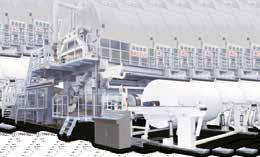

Chemicals: Technical Theme Case studies
Case study 1: reduction of dust on structured tissue machine
A structured tissue machine producing At-Home (AH) bath tissue experienced an excessive formation of dust. This machine has a three-layer headbox, and 100% Kraft hardwood fibre was used in the top and bottom layers, while refined Kraft softwood was used in the middle layer. During the production of bath tissue, the mill utilized wet-end softener to improve tissue handfeel and enzyme to increase strength in the middle layer. The application of softener reduces overall tensile strength, while the application of enzyme, if not managed properly, could lead to increased fines content in the short loop. Both of these applications, as well as the use of weaker fibres in the top and bottom layers, could contribute to excessive dusting during the creping process.
Kemira proposed application of a unique high solids GPAM resin to improve bonding of fibers and fines to the sheet, and thus reduce dust formation. Another objective was to impart temporary wet strength to the sheet, typically desired for premium bath tissue grades.
The strength resin was applied at a dose ranging from 0.5 to 2.5 lb/tonne on a solids basis. The parent roll samples prepared with different doses of strength resin were analysed on the Yankee side and airside using KemView Analyser. The analysis showed almost twice as much dust on the Yankee side than on the air side (Fig. 2), which is not surprising since the Yankee side is exposed to the aggressive action of a creping blade. As the strength resin

Figure 2: Dust reduction on both Yankee side and air side resulted from the GPAM resin application.
dose increased from 0.5 lb/tonne to 2.5 lb/tonne, the sheet dry tensile increased, which allowed for reduction of softwood fibre refining. The combination of a higher dose of strength resin and reduced refining resulted in a tissue dust reduction by 84 % on the Yankee side and by 80% on the airside. In addition to a substantial decrease in dust, a significant machine speed increase was obtained.
Case study 2: reduction of dust in production of “strong and soft” bath tissue
A tissue producer set a goal to produce a strong and soft bath tissue grade with low level of dust and lint. Kemira’s GPAM resin was already applied on this structured tissue machine utilizing eucalyptus and Kraft softwood fibre. To minimize dust, Kemira proposed an increase of the strength resin dose from 5 to 7 lb/tonne. Fig. 3 shows that this approach resulted in 68% less dust measured by the KemView test and 9% higher dry tensile. The increased dry tensile allowed for a reduction of fibre refining and a further dust reduction. This case study clearly demonstrates that a stronger tissue releases less dust. Reduced fibre refining also helped maintain the desired tissue softness. Overall, an increased dose of GPAM resin allowed the tissue maker to reach their target of soft and strong bath tissue with a low amount of dust.
Conclusions
Dry strength resins (DSR) are highly effective for dust control in tissue. Strength gained due to DSR also allows for reduction in refining, which can lead to a further decrease in dust and additional benefits such as tissue softness and bulk, increased dewatering and improved retention. The implementation of a DSR-based dust control program can now be more successful when supported by the unique KemView Dust method. This new method allows for quick and reliable quantification of dust and other structural features in the produced sheet, providing real-time insight into the dust potential during chemical trials or other process changes on the machine.
This article was written for TWM by Kemira Chemicals’ Lucyna Pawlowska, Principal Specialist, Applications & Marketing, Pulp & Paper, Americas, and Vladimir Grigoriev, Director, Applications & Marketing, Pulp & Paper, Americas.
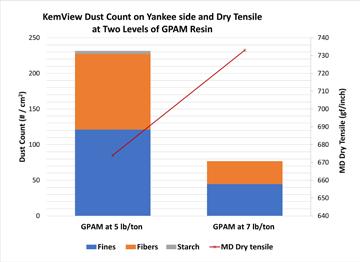
Figure 3: An increase in the GPAM resin dosage resulted in a significant dust reduction, including a reduction in loose fibres, fines and starch particles, while MD dry tensile increased, allowing for a decrease in refining and a further dust reduction.
References
1. Grigoriev, V., Mäkinen, M., and Zulian, R., ”Squeezing More Profits of Your Sheet Using
Novel and Conventional Strength Technologies”,
Tissue World Magazine, September 2013. 2. Campbell, C. “Grade specific optimization:
Permanent (PAE) versus temporary (GPAM) wet strength utilisation”, Tissue World
Magazine, September 2015. 3. De Assis, T. and Pawlowska, L., “A Comprehensive
Approach for Tissue Paper Characterization-
Kemira Tissue Quality Analysis”, Tissue World
Magazine, April 2021.
Acknowledgements
The authors would like to thank Harold Goldsberry for his contribution to the case studies and valuable discussions.
The Aquence LAM E9500 ECO targets the reduction of Scope 3 CO2 emissions and boosting safety and cost efficiency. Eilyn Meneses Villabona, Senior Market Strategy Manager EIMEA – Consumer Adhesives Henkel, explains. A TWM report.
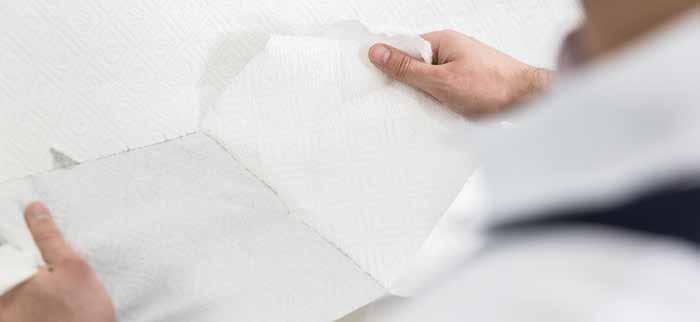
Henkel’s bio-based lamination adhesive: free of preservative and plasticiser, in action

Eilyn Meneses Villabona
Senior Market Strategy Manager EIMEA, Consumer Adhesives, Henkel
enkel is always working on being ahead
Hof the curve when it comes to emerging consumer trends that will define our future. And perhaps few trends are as urgent in 2022 as the need for sustainable processes and operations.
This trend is only increasing as consumer awareness of climate change grows and accelerates demand for sustainable products. Today, 61% of consumers are worried about climate change, but they also believe they can make a difference with their buying decisions. Some 67% of consumers have sought to make a positive impact on the environment through everyday actions. Little wonder that sustainability continues to be one of the greatest drivers for innovation.
The whole tissue industry is looking at what this means for the value chain and all of us will recognise this as an opportunity to do our part in driving positive change. Moreover, in an industry defined by tough competition and price pressure, sustainable solutions provide an opportunity to add value and differentiate products.
Henkel’s latest product – the Aquence LAM E9500 ECO – will help manufacturers reduce their carbon footprint while offering increased safety and cost-efficiency measures. This sustainability-grade adhesive for lamination is the latest innovation in a range of Aquence waterbased adhesives and additives dedicated for tissue and towel production.
It represents a new level of sustainabilityfocused grade. Unlike purely fossil-based polymer adhesives, it is made with bio-based raw materials and provides customers with a natural and sustainable solution that helps to bring down their Scope 3 CO2 emissions. As a preservative- and plasticiser-free adhesive, the new product also helps manufacturers ensure a safer working environment.
Aquence LAM E9500 ECO also demonstrates that taking more sustainable paths need not be cost-prohibitive: it can be diluted at very high ratios, ensuring low cost in use. Due to such breakthrough innovations in technologies and processes, there has never been a better time to rise to the sustainability challenge.
This article was written for TWM by Eilyn Meneses Villabona, Senior Market Strategy Manager EIMEA – Consumer Adhesives, Henkel.
Barometer Report BAROMETER ISSUE: SPECIAL FEATURE
In 2021, TWM interviewed tissue mill executives in North America, China, Southeast Asia, Germany, Brazil and the Middle East for the magazine’s Country Reports. Here, we revisit a selection of the leading companies to see what has changed.
ADVANCES IN GERMANY: THE FIRST PACK OF STRAW PULP TISSUE PRODUCTS
In August 2021, Donato Giorgio, President Global Supply Chain and member of the Executive Management Team, Essity, spoke in detail to TWM about his plans for a circular economy, tissue from wheat straw, and a dual strategy of private label and brands.
“This is the future, and we believe this is what the world needs,” Italian-born, Germany-based Giorgio said at the time.
In June 2022, his plans and action have been realised. The very first pack of Essity’s straw pulp products hit market shelves in Germany. The high-quality toilet paper - under the company’s Zewa brand – is made with 10% straw from its SEK 400m integrated tissue plant in Mannheim plant in Germany.
It is one of a kind, and the plant is now producing pulp based on alternative fibre taken from plant-based agricultural byproducts - wheat straw. Essity - consumer tissue’s second global player – has “become the first to launch a complete branded toilet paper range with alternative fibres,” he says now.
The process has also gained wider significance for its localised potential. If the initiative is rolled out globally, other by-products located close to sites could be involved. Essity has secured the rights to a new proprietary technology to produce what Giorgio says is a sustainable alternative pulp from wheat straw, and the
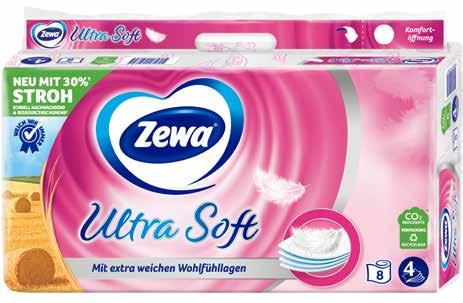
Straw pulp: A packshot of Essity’s brand new Zewa toilet paper made from straw
process is expected to reduce the use of water, energy and chemicals, while the byproduct of the integrated pulping process can also be refined and used as a substitute for oil-based chemicals.
It is, he adds, a project that could change the course of the tissue industry’s future.
Elsewhere, in October 2021 Essity also announced a project at its AfH mill in MainzKostheim that aims to be the first CO2free paper machine with green hydrogen. Natural gas will be successively replaced by green hydrogen on the site’s largest paper machine during ongoing production. Essity’s investment in the pilot project amounts to EUR 4m. Following installations and the re-build of the paper machine, the company will then gradually add green hydrogen to its energy supply. It is planned to run the drying hood of the paper machine on 100 percent green hydrogen by autumn 2022.
Magnus Groth, President and Chief Executive, Essity, has said about the project: “We will be the first in the world to use green hydrogen for tissue production. We are creating a sustainable process that is setting a new benchmark for the industry”.
As of June 2022, the project is progressing, and installations have now been put in place so that the H2 tests can start after summer.
Essity is also progressing with establishing a private label division for consumer goods tissue products. In Germany, its mills in Neuss (Düsseldorf) and Kassel have become part of the private label division, and an allocation of production volumes between branded and private label sites is starting now and will be finished in 2024.
And across all of its mills across the world, the business said that in light of global uncertainties with gas supplies, all sites are looking into measures to ensure the company can continue to deliver essentials tissue products.







